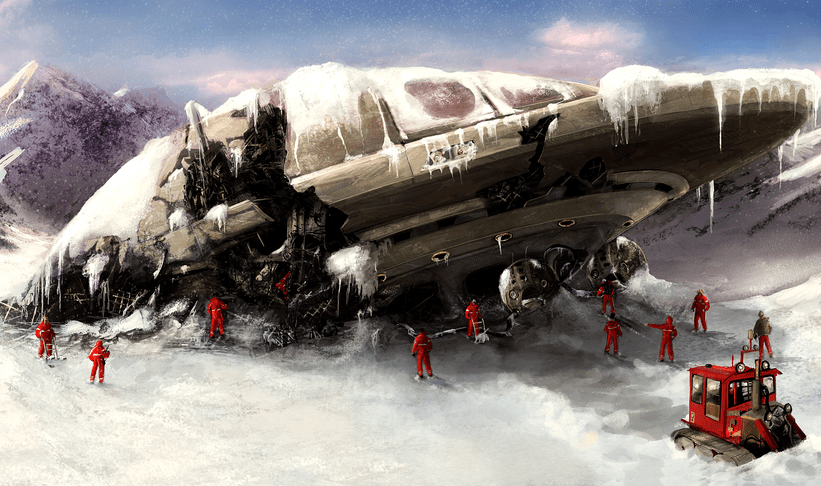VISUAL PROMPT
by Sans @ deviantart.com/Sanskarans

Write a story from the perspective of someone in this image (perhaps we cannot see them, but they're there).
Metal and Snow
It took over a month slogging through the ice before we found the artifact. The weeks I had spent piecing together bar stories and folk tales hadn’t been in vain, despite the insistence of naysayers at the Academy. The crashed ship was of an unusual design, not aerodynamic enough for conventional flight (which could explain its current state), but possibly functional as some kind of station or satellite, carried off world by a larger craft. As my team neared the artifact the preliminary measurements were taken. There were only the faintest residuals of heat and radiation, but the material of the craft was proving remarkably unyielding to remote scans of every frequency and method. Drones equipped with more limited equipment were sent in place of scientists, who didn’t dare enter yet without any guarantees of the environment within. Around 42% of the interior was too ruined to be explored, but that which could be mapped out showed neither life signs nor corpses. Once the interior was throughly vetted, more sophisticated equipment was taken inside and samples collected. Metal shavings were placed inside vials, a full 3D map of the ship was constructed (at least as far as the sensors could penetrate), and air samples were collected. Now that a path from the main road to the site was established, the real heavyweight research could begin, and the craft would be steadily taken apart to unlock each and every secret it contained. This job site smells like promotion.
